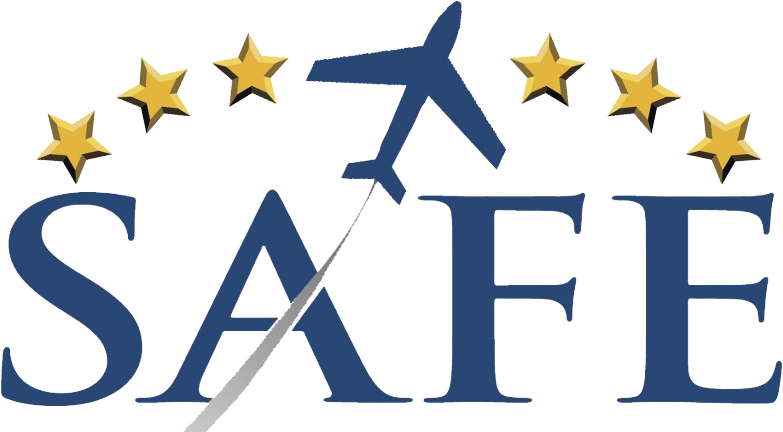“Good pilots are always learning” but this commitment is also vital for good flight instructors. To improve at anything, we must be continually curious, seeking new knowledge or inevitably cynicism and a glassy-eyed complacency set in. You know this look, 70% of US workers on the job are “disengaged”. A commitment to growth as a flight instructor does not only mean pursuing new ratings (and hopefully a Master Instructor Certification), but also learning on a daily basis from our students. Like every other certificate, a new CFI is a “license to learn.”
Look at the Canadian system (four levels) to see how perfunctory our FAA preparation can be! Maintaining a “beginners mind” makes the difference between “a thousand unique hours of experience and one hour a thousand times.”


According to psychologist Dr. Anders Ericsson in his fascinating book Peak, the secret to mastery in any field is “deliberate practice” and continually seeking excellence. For example, a physician with 20 years experience that is happy with “acceptable performance” and “performs on autopilot” is less effective (and less safe) than a doctor with only 5 years of deliberate practice. Quality over quantity is the rule for mastery. In education, one huge opportunity for educators to grow and make every hour count is learning from our students.
On the most basic level this means discovering how each unique individual learns efficiently and effectively. Our challenge is to creatively adapt our presentation to a variety of people and help them learn. Notice I did not say “teach them” -we are not pouring skill and knowledge into their heads! Our job is to present appropriately challenging experiences so they can assemble and code these experiences into increasing usable knowledge and skills. Careful observation and skillful questioning will reveal if we are succeeding; when to step in and when to back off and let learning occur. That blank stare, frustration or lack of progress area critical clues. Gaining emotional intelligence and compassion is not easy for technically minded people like pilots, but it will make your teaching much better and your whole life a richer experience.

Active listening, with a continuous feedback loop, is essential to calibrate and improve our performance. The art of providing an optimal challenge without being either boring or overly challenging is critical and only attainable with continuous feedback. Those deadly “one size fits all” lesson plans really work for no one; get creative. In the learning environment, less talking from the CFI and more listening and questioning are usually a sign of progress in education.
Similarly, fewer CFI demonstrations and more student flying (with encouragement and coaching) creates an exciting and fun opportunity for real learning. Obviously we have to keep the learning environment safe, but allowing our students room to grow is critical. For learning to happen, we must allow mistakes to happen (hopefully increasingly self-corrected).

A savvy flight educator must know the boundaries of safety and always subtly guide the flight experience. This requires knowing and trusting your clients capabilities, but also maintaining an alert watch. Sometimes this is presenting a question about a forgotten critical item, or directing perception so your student acquires an insight they might otherwise miss. An expert is a person with a rich mental representation of their environment that easily recognizes patterns and meanings that would escape the naive viewer. We need to convey those meanings. A savvy flight educator knows about a developing difficulty miles before their student. Our awareness keeps this situation safe but we also must be careful not to spoil their learning opportunities. Letting a missed item persist until a student discovers it can be excruciating!
One of the most important understandings for an experienced flight educator is what the “FAA finished pilot” looks like at each level of certification. When is a person a suitably proficient to be a sport, recreational, private or commercial grade pilot? Though it is frustrating that we cannot make every person into an astronaut, we have to know when our applicant meets the FAA standards and is ready to test for their certificate or rating (and also be a safe future aviator). Just like personal minimums in piloting, in test preparation there should be a “margin of safety” and extra capacity in every applicant to insure success (despite the inevitable stress).
Knowing the required skill, knowledge and judgment required for each test and the performance psychology of your applicant takes years to get right. This is one reason DPEs are required to have so much experience teaching to be designated as examiners. Getting feedback from your DPE is the most valuable (and under-appreciated) sources of learning for the flight educator. Search out a DPE that is willing to give you an honest, detailed debrief on every applicant and you will become a training team creating safer and more comprehensive pilots…more to come!
Please “follow” our SAFE blog to receive notification of new articles. Write us a comment if you see a problem or want to contribute an article. We are always seeking more input on aviation improvements and flight safety. There are many highly qualified aviation educators out there! If you are not yet a SAFE member, please Join SAFE and support our mission of generating aviation excellence in teaching and flying. Our amazing member benefits alone make this commitment worthwhile and fun. Lastly, use our FREE SAFE Toolkit App to put pilot endorsements and experience requirements right on your smart phone and facilitate CFI+DPE teamwork. Working together we make safer pilots!

